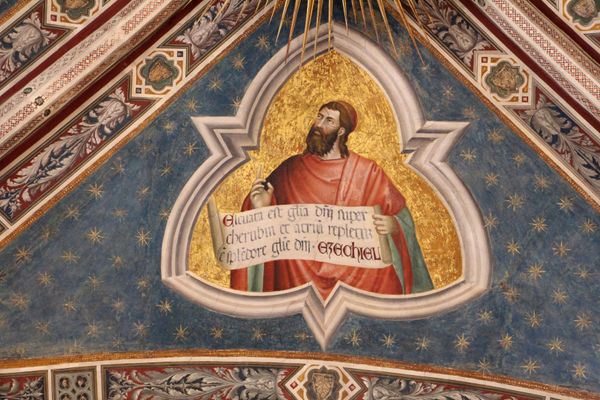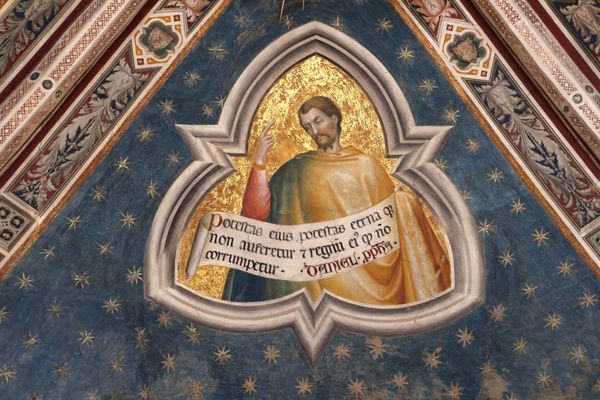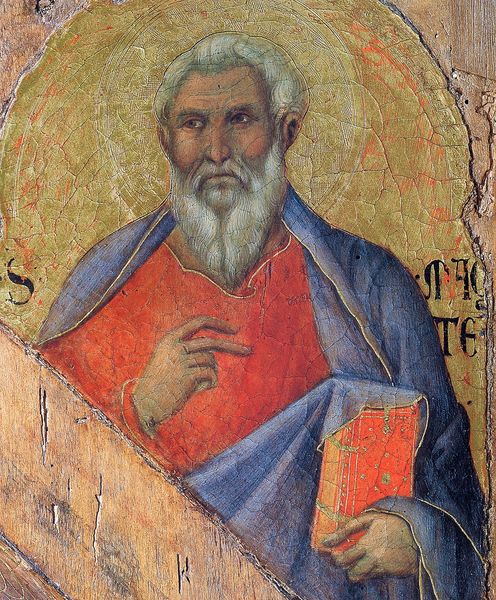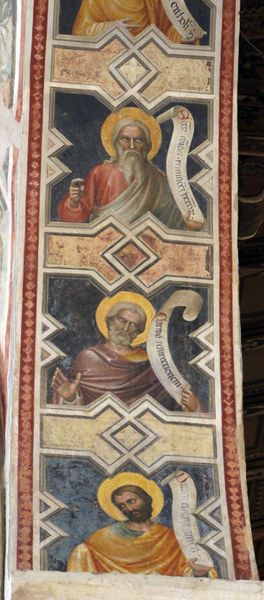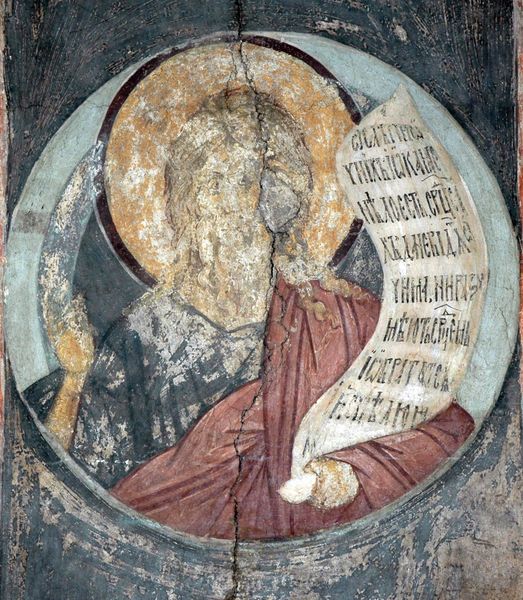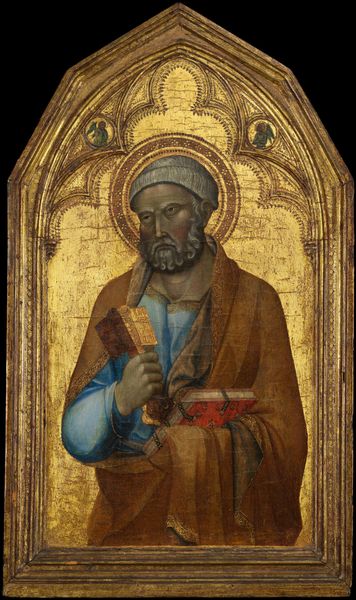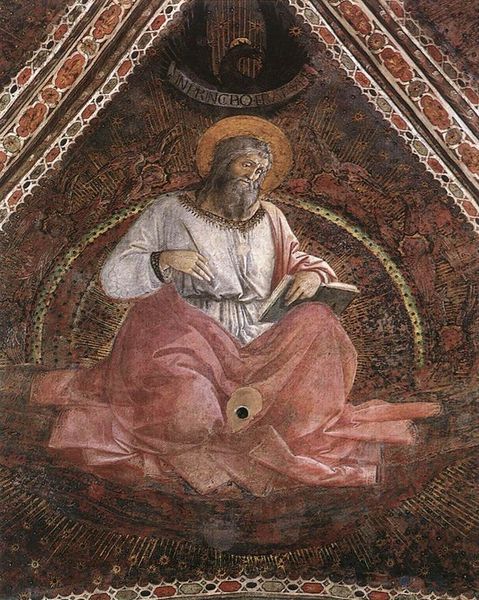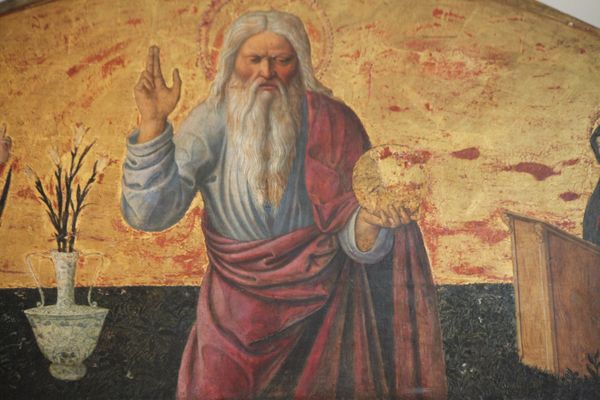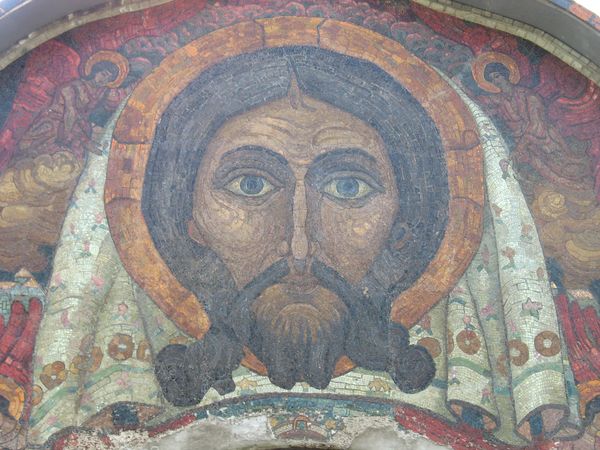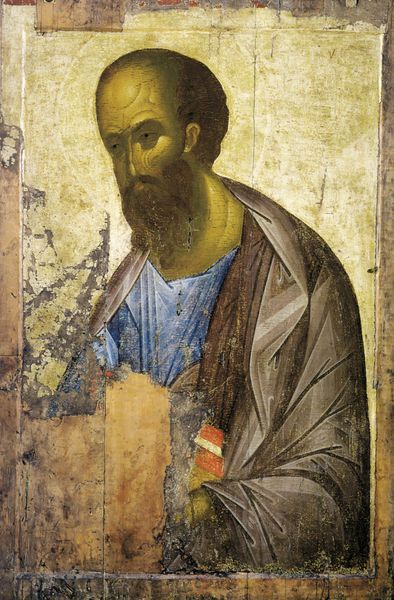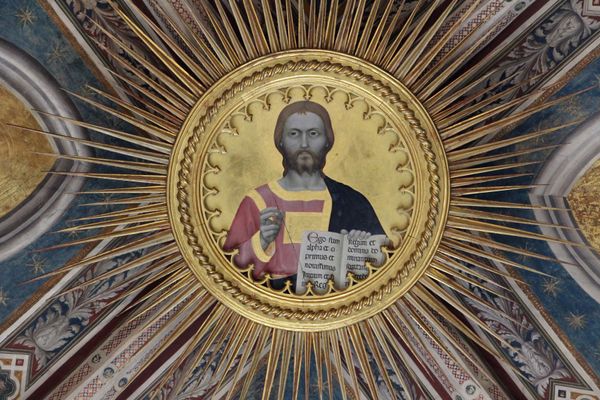
tempera, fresco, mural
#
portrait
#
medieval
#
narrative-art
#
tempera
#
prophet
#
sculpture
#
holy-places
#
figuration
#
cultural heritage
#
historic architecture
#
form
#
fresco
#
traditional architecture
#
line
#
history-painting
#
italian-renaissance
#
mural
#
historical building
#
statue
Copyright: Public domain
Here in the Rinuccini Chapel, Giovanni da Milano depicted religious scenes using fresco, a demanding technique where pigments are applied to wet plaster. The appearance of the chapel is deeply influenced by this method; the pigments merge with the fresh plaster, creating a durable bond and a unique matte finish. Fresco demands swift execution, as the artist must complete each section before the plaster dries. Looking closely, you can see the divisions between these sections. The extensive use of this process reflects the economic realities of the time; fresco was a relatively affordable way to decorate large surfaces. The artist’s skill, and the many hours of labor invested in preparing walls, mixing pigments, and applying the paint, are all part of the chapel's cultural significance. Recognizing the labor and materials involved, and the broader social context in which this chapel was created, allows us to appreciate the artistry and cultural value embedded in every stroke.
Comments
No comments
Be the first to comment and join the conversation on the ultimate creative platform.
